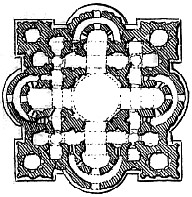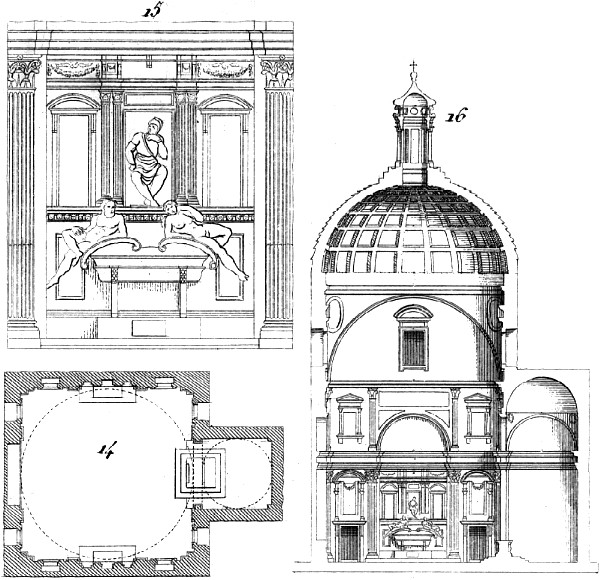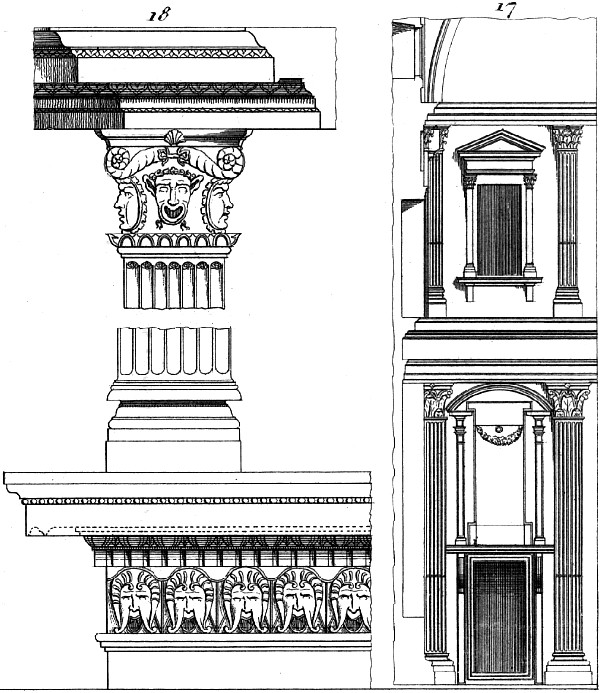Pierre Desaubeaux or Desaubeaulx
architect and sculptor.
Desaubeaux worked on the château of GailIon (Eure, France) at the beginning of the sixteenth century. Between 1520 and 1524 he made the bas-relief of the "Tree of Jesse," in the tympanum over the main door of the cathedral of Rouen, France. From 1523 to 1525 he worked on the monument of the cardinals d'Amboise at the cathedral of Rouen.

Second plan of Church of St. Peter by Balthazar Peruzzi of Siena, when he was named architect by Leo X in 1520, after the deaths of Julio Sangallo, Friar Joconde, and of Raphael. This plan, in which a Greek cross is substituted for a Latin cross, was like the former never executed, and the idea even would have been lost had not Serlio, disciple of Peruzzi, preserved it.
Seroux
| |

14-16. Plan, portion of the interior decoration, and transverse section of the sacristy of the Church of St. Laurence at Florence, and called the chapel of the Princes, erected from the designs of Michael Angelo.
Seroux
| |

17. Part of the section of the Chapel of the Princes.
18. Details of the interior decoration of the same chapel.
Seroux
|